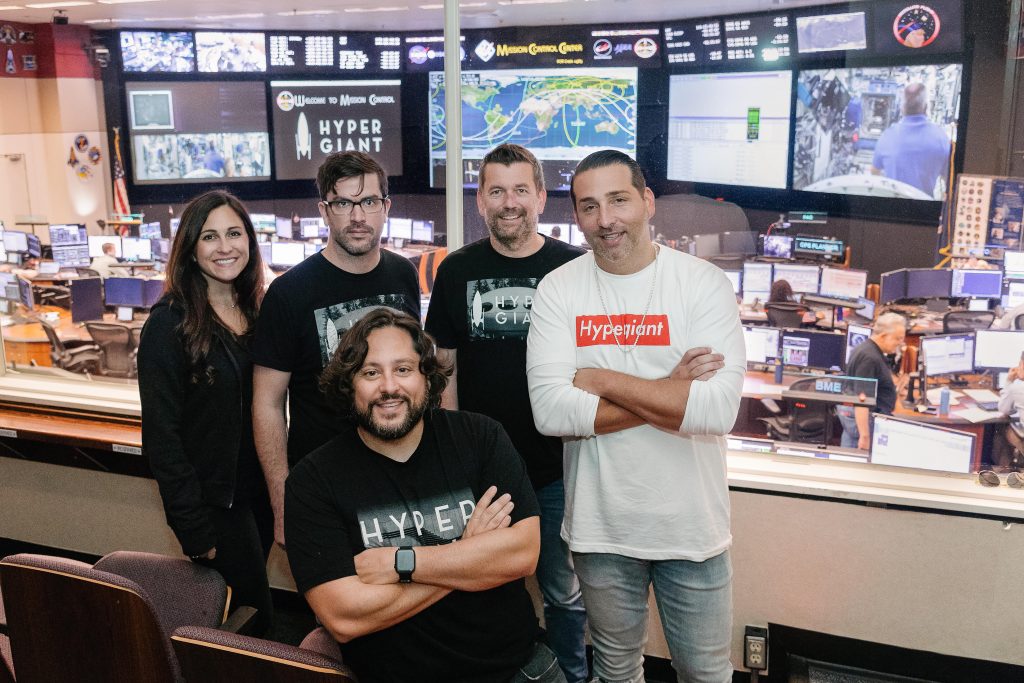
Austin-based Hypergiant Industries on Tuesday announced a partnership with the United States Air Force to develop a new type of satellite that can be easily updated and reconfigured in space.
Hypergiant plans to launch the first live satellite on NG-15, the 15th planned flight of the Northrup Grumman robotic resupply spacecraft Cygnus in February of 2021.
“Based on the success of that mission, we intend to start rolling out the rest of the constellation over the next two years,” Ben Lamm, CEO of Hypergiant, wrote in an email in response to questions about the project.
It is known as Hypergiant Project Chameleon, which will ultimately include between 24 to 36 satellites in a constellation configuration, Lamm said. It’s called chameleon because it can change and be reconfigured through software updates.
The satellites will form a network that will work together and allow them to set up a computer system in lower earth orbit that can communicate with ground stations as well, Lamm said.
In the past, Hypergiant has talked about creating an Internet for outer space to eventually connect settlements on the moon and Mars.
“While this is an independent constellation, this is a critical step from a technology perspective to some of our longer-term ambitions including an interplanetary comms and relay network,” Lamm said.
Hypergiant will be able to update the satellites easier and faster than regular satellites because it is working with the Air Force Platform One system and architecture, Lamm said.
“This architecture coupled with our hardware and software will allow for a secure environment to update code in real-time,” he said.
The Air Force and Space Force are currently the focus of the constellation, and will be its main users, Lamm said. The Chameleon Constellation is being funded by the Air Force’s Small Business Innovation Research grants. Hypergiant is working towards a $10 million phase three contract with direct Air Force and Space Force weapon system support, Lamm said.
“We need to be able to put assets in space as quickly as possible and then continuously improve them to maintain superiority,” U.S. Air Force Major Rob Slaughter, Director of the Department of Defense’s Platform One, said in a news statement. “In order for the US to remain competitive and protect the systems that run the lives of everyday Americans, we created a solution that allows for continuous software delivery in space. The only difference between a national security system and space junk is the software that operates it. Americans deserve the best space protections possible.”
The space sector is becoming more important than ever and lowering the cost of launches and additional privatization and commercialization allows more innovative entrants into the market than just legacy defense partners and governments, Lamm said.
“The new space race is here and is being driven by both innovations in hardware and software,” Lamm said. “The industry is at a transition point shifting from a predominantly hardware industry to one that is being advanced and innovated through software.”
Hypergiant will be able to leverage distributed computing in space for satellite to satellite machine learning and will be able to reconfigure those satellites on the fly to tailor them to the needs of a new mission, Lamm said.
“Let’s say a volcano erupts and there isn’t an imaging satellite in range, the Chameleon Constellation could be reconfigured in real-time to support the efforts,” Lamm said. “This planned Chameleon Constellation of 24 to 36 satellites could switch within minutes from providing communications to taking pictures of the disaster and aiding first responders.”
Founded in 2018, Hypergiant Industries has offices in Austin, Dallas, Houston, Seattle, and Washington, DC. The company has 230 employees. The company’s space division, Hypergiant Galactic Systems, focuses on AI-driven software and hardware for the space industry with 24 employees specifically working on space solutions.
The software components for the project were mostly built in Austin and the hardware was built in Houston.
“The constellation will be operated using our H.I.V.E. satellite operations platform which was designed and developed in Austin,” Lamm said.
In February of 2019, Hypergiant acquired Satellite & Extraterrestrial Operations & Procedures, also known as S.E.O.P.s, a Houston-based satellite deployment, and services provider for the CubeSat and MicroSat markets. Hypergiant has already completed four deployed missions (NG10, NG11, NG12, and NG13) with a 100 percent mission success rate and has worked with NASA, Army Space, DARPA, Lynk, Dynetics, and Amazon Web Services.
“This is just another measured step for us as we continue to apply our disruptive development abilities and artificial intelligence expertise into an incredibly challenging industry that is ripe for disruption,” Lamm said. “We love how aspirational space is for all mankind and are honored to be moving progress forward in any way we can. The Chameleon Constellation is one of two Hypergiant-owned satellite constellations we are developing that leverage our Constellation-as-a-service infrastructure that we have been using for some of our commercial and federal clients.”

